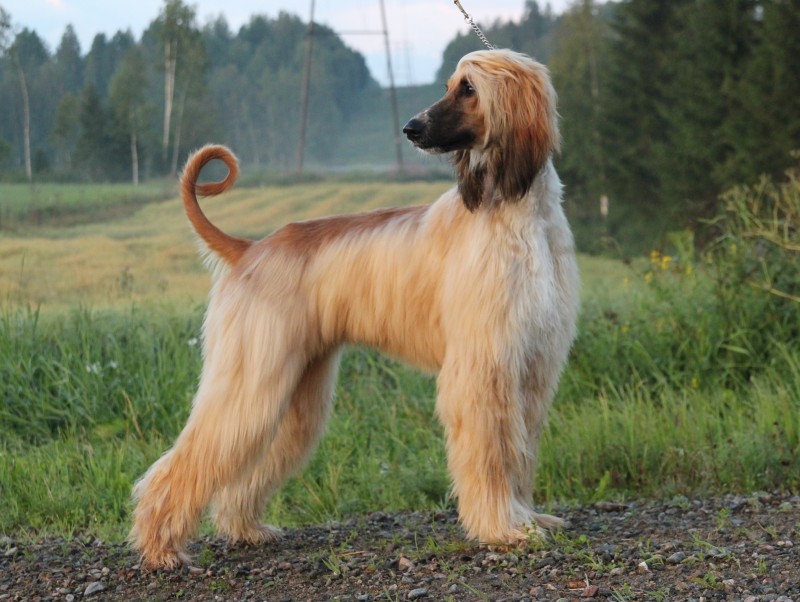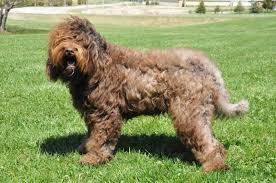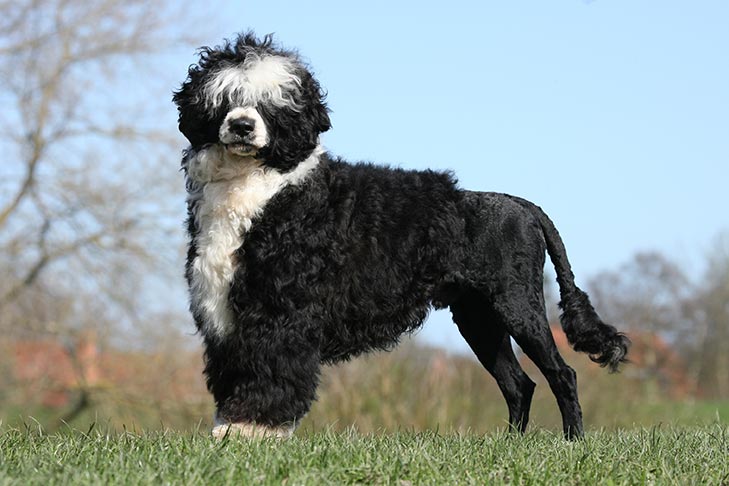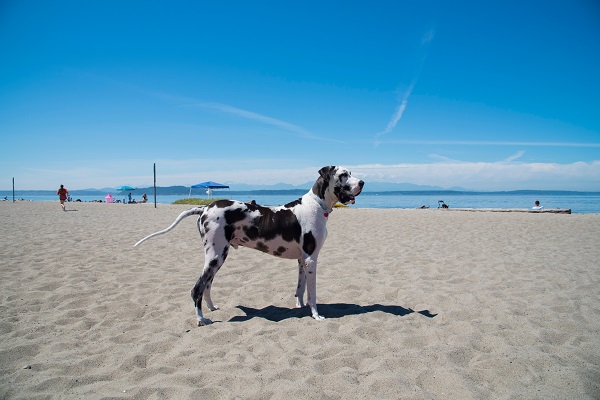When you think of the long-haired dog breeds, there are so many styles you get! The most prominent among them is the silky swish of the trot of an Afghan Hound. The bounce of the cords of a Puli never fails to impress, and the top knot on the tiny head of a Yorkie.
The long-haired dog breed needs daily brushing and frequent grooming visits. In other cases, it is so low on maintenance that it will surprise you. A few of these dog breeds happen to be hypoallergenic as well! Still, if you are thinking of getting such a dog research well!
-
Afghan Hound
Afghan Hounds have short curly coats when they are pups. This coat grows longer when it ages and becomes so smooth and silky that it looks like a work of art. As per the Afghan Hound Club of America, you should never brush your coat when it is dry.
It means you have to use a spray bottle filled with water and some dog conditioner thrown in before you groom them. You can brush them every day, or bathe them a few times a week.
-
Barbet
Barbets are a breed of water dogs from France. They have thick, curly, and long coats. At times, it may be wavy instead of being curly. You can trim down their hair but by no more than three to five inches! Barbet Club of America says you should brush your hair frequently to avoid tangles and mats. You can also wet the hair after brushing, as that would bring back the bounce in their curls.
-
Bergamasco Sheepdog
Bergamasco Sheepdogs have corded coats. They are calm shepherds who have been created keeping in mind the conditions of the Italian Alps. Their cords are natural and also help in regulating their body temperatures.
Thus, you must never trim them close or shave them down. They have three types of fur – dog, wool, and goat – and are all rather distinct. They get their wool or goat coats when they are around a year old.
-
Briard
The hairstyle of a Briard will remind you of Shawn Hunter from Boy Meets World. They have long and wavy coats that tend to be a bit coarse. According to the Briard Club of America, you have to spend a minimum of two hours each week grooming and brushing their coats.
It helps that they do not shed a lot and that their coats do not gather a lot of dirt. However, you must keep their hair free of tangles.
-
Collie
Collies come in two varieties when it comes to the type of coat – smooth and rough. The ones with rough coats are the more popular ones thanks to their fluffy and long looks and coloring that resemble the Lassies to such an extent.
You have to brush these coats at least once a week. They usually do not shed a lot, but when the seasons change they will, in all probability, leave more hair in your house than you are used to.
-
German Longhaired Pointer
Do you plan on going on outdoor expeditions with your German Longhaired Pointer? In that case, be ready to brush their hair every day and snip out all twigs and burrs that might have got stuck in their tails.
Please remember that the fur behind their ears also tends to mat easily. These are hunting dogs with double coats, and this is why, if you brush them frequently, it will help them during the shedding season and make life easier for you all.
-
Gordon Setter
Gordon Setter Club of America has this tagline for this wonderful breed – “Beauty, Brains & Birdsense”. You have to brush their fur at least once a week. You can keep their curls straight or wavy.
However, trim around their feet, tail, and ears every month, as doing so will ensure no knots in those spots. Check their floppy ears frequently because those tend to gather dirt a lot for your liking.
-
Irish Setter
Irish Setters are just like Gordon Setters in that you have to brush their silky coats every week. Dematting tools and combs are ideal options for these dogs because their silky hair can get tangled easily.
This is especially so since most of their longer hair is on their underbelly and legs. Show dogs who belong to this breed have longer and straighter coats. However, if your Irish Setter is a family pet,
you can trim their hair a bit shorter.
-
Keeshond
Keeshonds are a dog breed from Germany and are a lot like Spitz. They have unique colorings on their faces that make it look like they are wearing glasses. They have a couple of layers of fluffy fur as their coat that requires such little maintenance that it is incredible. Keeshond rescue groups recommend that you brush them at least once a week and do so for a minimum of an hour uninterrupted by other activities.
-
Komondor
Komondors are a lot like Bergamasco Sheepdogs in how corded their coats are. Once the cords form, you do not have to brush their coats longer. They may be big dogs, but they are agile as well.
The cords start to form when they are between eight months and a year old. When they get older, their cords get longer as well. According to the Komondor Club of America, you can clean their dirty coats by rinsing them with water.
-
Lhasa Apso
If you want your Lhasa Apso to have long hair for dog shows, or otherwise you need to bathe them well at least once every couple of weeks. Otherwise, you can have their coat trimmed short – it will be perfectly acceptable.
However, in both cases, you must keep brushing them to ensure their silky fur does not tangle. Just as you would do with a dog breed with a corded coat, you must dry a Lhasa’s hair.
-
Newfoundland
Grooming a Newfoundland can be a great option when you are looking for an actual challenge. These big dogs should be brushed several times a week with a comb and a slicker brush.
They shed a lot, and their thick double coats can get mats just like that! Brushing helps you maintain control of both these issues. Make sure you are being steady and slow about it so that you do not end up missing any patches on the big bodies of these dogs.
-
Old English Sheepdog
With their long double coats, Old English Sheepdogs can be described as giant balls of fluff. If you wish to keep these pups healthy and happy, you need to brush down their skin several times a week.
It will make sure there are no snags, or they are not snarly at all. It is also a good decision to trim their paws as if they have extra hair between their toes, it might add to dirt buildup.
-
Pekingese
Pekingese dogs have long double coats – the hair around their heads and necks is lengthy. It resembles a poofy mane. While you can always trim their coats and make them shorter, you should not make a habit of it, as doing so will destroy their texture and color.
It is best that you trim their hair on occasion. It does not matter if your Pekingese has short or long hair you must brush it multiple times a week so that the coat stays healthy.
-
Portuguese Water Dog
Portuguese Water Dogs have thick coats as well, and they are hypoallergenic as well. They have black, white, and brown fur with either easy waves or curly cues. Show dogs of this breed often have their hindquarters clipped close to the skin – referred to as a lion clip.
As the pet parent, you can also choose to let these curls run free. However, in that case, make sure you brush the curls every day so they do not get knotted. Also, trim their entire body at least once a month.
-
Puli
American Kennel Club describes them as wooly, weatherproof, and dense. Before you get such a dog, you should know that it takes a lot to maintain their coats in proper condition. You can keep their coats brushed out in which case they would end up looking like crimped fluff, corded, or trimmed, which will resemble the coat of a Golden Doodle.
Since they have double-coated curly fur Pulis can develop tangles easily. They are like other corded dogs that you can bathe, but you must dry and rinse them thoroughly.
-
Pyrenean Shepherd
You get Pyrenean Shepherds in both rough and smooth-coated varieties. Both these types have double coats, but the thing is that maintaining them does not make you crazy! However, brush them at least once a week – twice a week is even better – to make sure there are no debris or snags in their coats.
They are between 15 and 21 inches in height and weigh between 15 and 30 pounds. These dogs are affectionate and playful individuals with high activity levels. They shed moderately and live up to 17-19 years.
Read More: Difference between Long Haired VS Short Haired German Shepherd
-
Shetland Sheepdog
Since Shetland Sheepdogs are as great as they are with kids, you can involve the whole family, when grooming them. They are cousins of Collies and have rough double coats just like them. For that matter, since they have such dense undercoats, you must brush them once every few days to ensure there are no tangles or mats.
However, please refrain from trimming them down. It is the coat of a Shetland Sheepdog that protects them from all the natural elements, including cold and heat.
-
Tibetan Terrier
Tibetan Terriers have wooly double coats that keep them warm even in frigid temperatures. There is a lot of variety in terms of their coats, such as the following:
- curly
- wavy
- wiry
- smooth
- straight
You can always trim their coats and make them shorter, but if you asked them, they would like to keep their luxurious locks depending on what time of the year it happens to be. These dogs are between 14 and 17 inches and 18 and 30 pounds heavy.
They are clever but sensitive individuals who require a moderate-to-high activity level. They shed only moderately and live between 15 and 16 years.
-
Yorkshire Terrier
The coat of a Yorkshire Terrier is a lot like our hair. Since they are as silky as they are, brush them daily and bathe them once a week. This is especially so when you wish to keep it long. However, Yorkies are also totally fine if you trim it short.
If you want them to not have vision issues or eye infections, you must pull up the lengthy locks on their heads and tie them into cute topknots. Since they have single-layered coats, you must give them jackets or sweaters in winter.
Conclusion
The kind of coat your dog has determines the way you should groom them. Dog breeds with long hair usually need greater attention as far as brushing goes since their hair tends to get tangled more easily and pick up more dust. Use a slicker brush for a dog breed with silky long-haired coats. These brushes remove debris, detangle hair, and are gentle on their finer fur. If your dog breed has wooly or curly coats, you should use these brushes frequently to ensure the coats are healthy.

 DogExpress
DogExpress



























 in Chandigarh, India.
in Chandigarh, India. 
